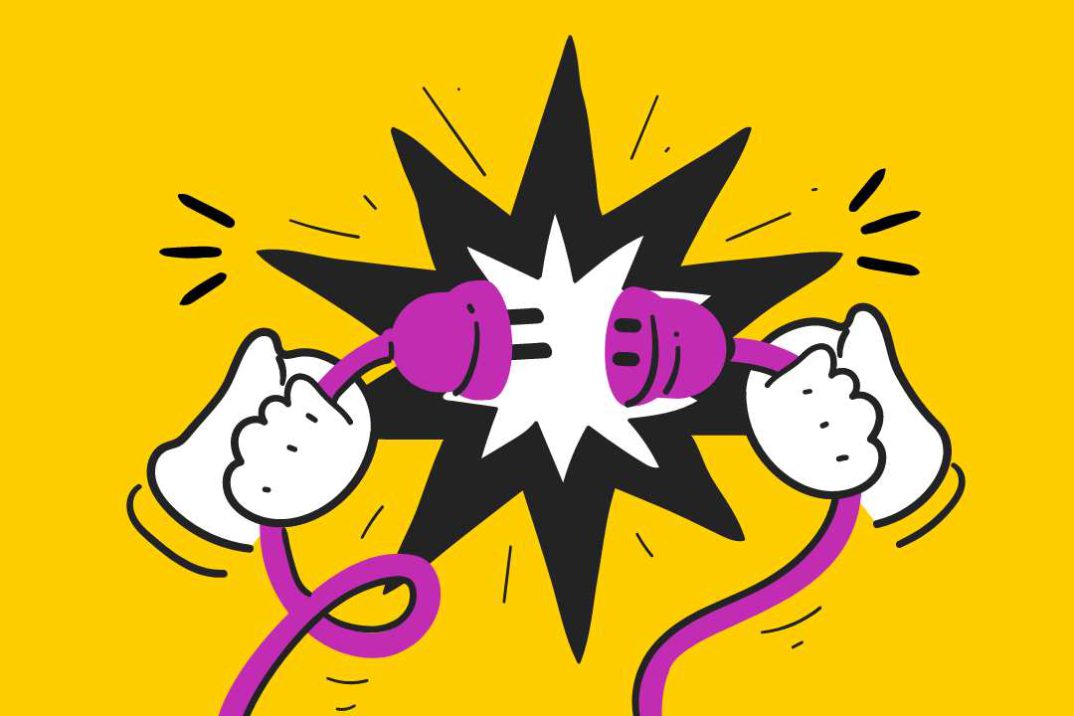Right to disconnect: The need for a lawful lull
Everyone needs a break from work. Along with the obvious health benefits, being able to leave work at work leads to higher performance and engagement. People with a healthier work-life balance do better work.
California Assemblymember Matt Haney recently introduced a bill to enshrine that balance into law. This “right to disconnect” bill limits work-related communication outside of nonworking hours, echoing laws already passed in Australia, Argentina, Belgium, France, Italy, Mexico, Portugal, and Spain.
If passed, the bill would mark an important step toward worker well-being protections, likely changing American work culture as we know it.
But should employers wait for an employment law before adopting practices that benefit their bottom line? What’s stopping your workplace from giving employees the space they need to get more done?
In this blog, we’re talking about the benefits of disconnecting from work. Tighter working hours may seem counterproductive to more output, but you may be surprised by the benefits of giving people a well-defined break from their jobs.
Right to disconnect benefits
Let’s face it: working will never be as fun as not working. Given the choice, most people would rather do what they like than spend eight hours working on someone else’s project. This shouldn’t come as a surprise, yet many workplaces try to motivate using an all-gas, no-brakes culture.
People dread toxic, high-pressure jobs, and the stress they endure at home can manifest as:
- Anxiety and depression
- Increased drug and alcohol use
- Unhealthy eating
- Burnout and workplace stress
- Absenteeism
- Physical health problems, such as cardiovascular issues
Communications from work can exacerbate this stress—imagine trying to relax or meditate and hearing your smartphone chime with an unhappy client email. This lack of disconnection keeps people on call and focused on work, leaving them tired for the next day.
On the other hand, a healthy work-life balance results in better sleep, more nutritious diets, and an overall happier demeanor. Let’s talk about how.
Working within work hours
Every college student has a story of staying up until 3 a.m. to finish a paper, only to spend the next day exhausted. Workers, it turns out, do the same.
Sleep is an increasingly precious commodity in the U.S. Nearly 38 percent of adults average less than 7 hours of sleep a night, overlapping with about a third of Americans who check their email outside regular working hours. Not great!
Meanwhile, people who get adequate rest do better work. According to the Sleep Foundation, the rejuvenation of sleep aids:
- Cardiovascular function
- Immune system
- Ability to think clearly
- Learning new information
- Emotional stability
A restful sleep starts with disconnecting from work. Workers shouldn’t deal with work-related tasks or phone calls when they clock out or leave the office until they’re back.
Peru’s right to disconnect law entitles remote workers to a 12-hour minimum of disconnected time, ensuring plenty of time to rest and stop thinking about work.
Mindful eating
Strict working hours also result in better eating habits. People who can plan around specific meal times tend to eat healthier by cooking meals or snacking less on processed foods.
On the other hand, people with endless work demands find it harder to carve out time for a complete meal. They tend to eat fast and light, assuming the stress of their job leaves them with an appetite.
Many workplaces stock break rooms with healthy snacks to offset interrupted mealtimes, but the superior solution is much simpler: limit working time so people can go home and eat.
Helping employees disconnect after work
Management has a huge role in getting employees to finish their work by day’s end. This is because many employees—especially new hires—see the optics of staying late and working overtime as worth the cost of making a good impression on their boss.
Don’t make overwork cool. If someone’s struggling to get all their work done by the end of the day, you should take a more active role in managing their workload.
Manage workloads effectively
Employees can better separate their professional and personal lives with manageable workloads and clear boundaries. For managers, this means:
- Defining clear performance metrics and deadlines: Give employees clear, measurable goals that help them focus on what matters and avoid unnecessary stress from unclear or shifting targets.
- Setting realistic expectations to prevent overworking during nonworking hours: Ensure deadlines are achievable and reasonable to avoid extended working hours and burnout.
- Provide detailed job descriptions: Clear job descriptions help employees understand their roles and responsibilities, helping to reduce the likelihood of overlapping duties and overwork.
Utilize helpful technology
Technology can also help employees disconnect after work. Many tools and apps are available to tasks, track working hours, and separate work and personal time.
Right-to-disconnect task management tools
Platforms like Asana, Trello, and Monday help employees organize and prioritize tasks. These tools can facilitate team collaboration if someone needs extra help to meet a deadline.
Automating routine tasks
Automation tools like Zapier or IFTTT can ease the burden of repetitive tasks by letting a computer handle them. It takes fine-tuning, but automation lets employees focus on critical aspects of work without being bogged down by mundane activities.
Time tracking software
Apps like Toggl and Clockify track time spent on different tasks to give employees insights into their time management, highlighting ways to improve and be more efficient.
Communicate often
Employees get quiet when they feel overwhelmed. In fact, many managers are shocked to find out their employees are struggling because no one ever thought to bring it up.
Regular communication is key to supporting employees and keeping workloads manageable. With open lines of communication, managers can identify breakdowns and act before they become more serious issues.
Here are a few ideas for keeping communication open with employees:
- Periodic check-ins: Regular one-on-ones help managers gauge employees’ workload levels and address their concerns. They also provide space for employees to ask for help.
- Team meetings: Collaborative problem-solving is one of the best ways for employees to engage and feel supported. Team meetings keep everyone aligned and aware of each other’s responsibilities, strengthening the team while preventing overwork.
- Encourage open dialogue: The best workplaces help employees feel comfortable discussing challenges with their workload, starting with management. Executives should practice transparency so that employees know to do the same.
Clearly defined tasks and readily available support help employees stay engaged and feel good about their work. That feeling of successfully finishing out the day, in turn, helps them disconnect once they get home.
Challenges to disconnecting from work
Disconnecting from work is complicated by the ever-blurring lines between professional and personal life. This became especially true following the COVID-19 pandemic when remote work increased dramatically.
While remote work offers flexibility, it can also create challenges for employees due to:
- Always being on: The convenience of remote work makes some employers expect constant employee availability, leading to longer working hours and increased stress.
- Lack of physical boundaries: Without a physical office, home becomes work, making it harder to disconnect mentally and physically.
Many modern teams span the globe, and working with global teams can present additional challenges for disconnecting from telework. Different time zones mean someone is always working, cutting the time needed to disconnect. Employees of global teams may need to meet or collaborate with colleagues in different time zones, extending their work hours.
The Right to disconnect: Overcoming FOMO and reclaiming your rest
Jobs constitute many people’s identities, and some to a point where being at work gives them comfort and fulfillment. If disconnecting could mean missing out on important information or opportunities, these employees won’t want to disconnect.
They may constantly check emails and Slack channels to stay updated with work-related developments and even worry about hurting or stunting their career.
Company culture plays a key role here: showing by word and action that having a good life at home is good.
Taking Control: Personal Accountability and Habits to Combat Insomnia
Not all overwork comes from a desire to get ahead—some employees can’t manage their time well enough to finish everything on time. When they run out of hours at work, they eat into their time at home to keep up.
This can be a challenge for managers, but the answer is to foster a supportive team and clearly communicate deadlines. Let employees know what needs to be done that day, and check in often to see how things are going.
Coaching may be needed to help them get into the right mindset and stay engaged.
Right-to-disconnect conclusion
Right-to-disconnect laws are here to stay. As automation gobbles up mundane work tasks, the desire for productivity will push further into workers’ personal lives. It’s more important than ever to push back and protect the sanctity of home.
Managers are the boots on the ground to ensure each employee has time and space to detach for the next day fully. By using time management and project direction apps, they can keep an eye on where efforts are spent to ensure everyone can finish by the end of the day.
Executives can support management by practicing what they preach—when the workday ends, it’s time to go home. Don’t reward overwork unless you want to see more of it.
The more businesses commit to these practices, the easier it’ll be for all of us to find a work-life balance and be more productive at work. That’s something you can shout from your LinkedIn rooftop.
More Resources:
What does DEI mean in todays workplace
Work life balance examples: Your guide to a more fulfilling life
The burnout epidemic: Why it’s happening and how to fix it





